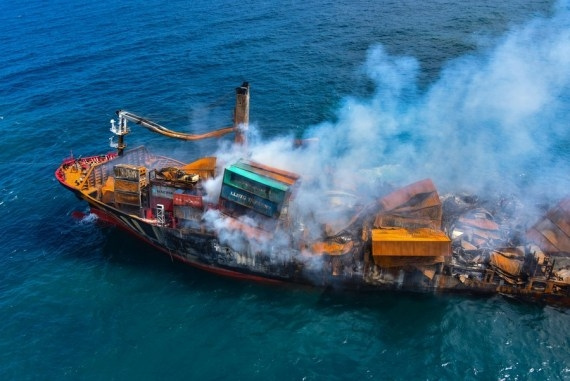Sri Lanka is witnessing the dangerous after-effects of the fire and sinking of the X-Press Pearl cargo ship as over a hundred carcasses of turtles, dolphins and even a blue whale, have washed ashore on its pristine beaches.
The Singapore-flagged MV X-Press Pearl was carrying nitric acid, chemicals and plastics from India to Sri Lanka when it caught fire on May 20. It eventually sank in the initial days of June.
Soon after the accident, dead fish and other animals had begun to wash ashore in small numbers. The deaths are believed to have been caused by chemicals being ferried by the ship. Also, debris–burnt fiberglass and plastic pellets–from the damaged ship had begun washing ashore.
Read More: Entire Indian Ocean Region looks at eco-disaster as cargo ship X-Press Pearl sinks
Sri Lankan ecologists had earlier told India Narrative that the damage to the Indian Ocean region would be enormous. In an email reply to India Narrative, Prof. Charitha Pattiaratchi, professor of oceanography at the University of Western Australia, had said: “The plastics last forever, so the impact will be for many decades to come.”
Pattiaratchi had said that the damage to the Indian Ocean will stretch from, “Somalia to Indonesia, including Maldives,” adding that both sides of the Indian coast too will suffer environmental damage due to the sunken cargo ship.
The Sri Lankan government has begun conducting investigations and post mortem analysis on the bodies. Anil Jasinghe, Environment Ministry Secretary, told news service AP: "Provisionally, we can say that these deaths were caused by two methods—one is due to burns from the heat and secondly due to chemicals. These are obvious".
AP also quoted Thushan Kapurusinghe of the Turtle Conservation Project as saying that the dead turtles had oral, cloacal and throat bleeding and "specific parts of their carapace have burns and erosion signs.”
Read More: Australia and China spar over the Great Barrier Reef




















